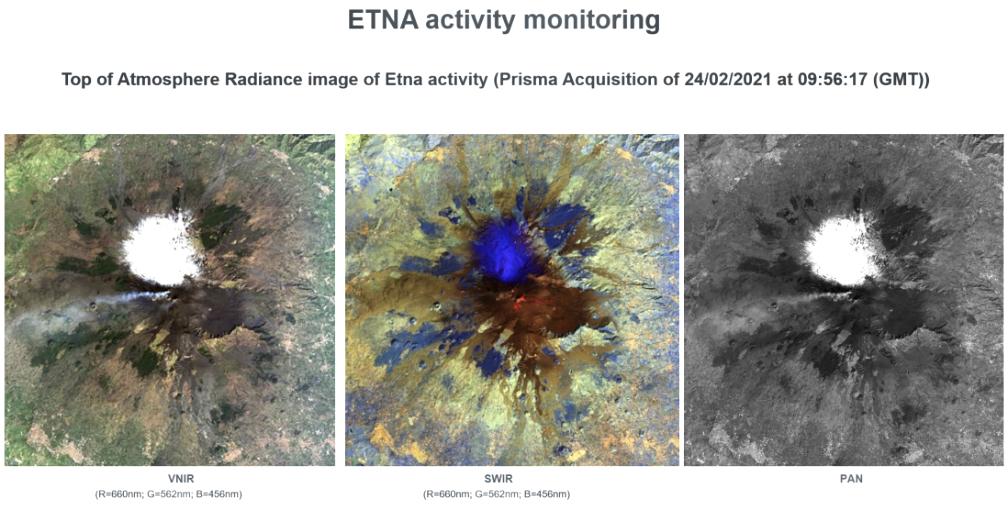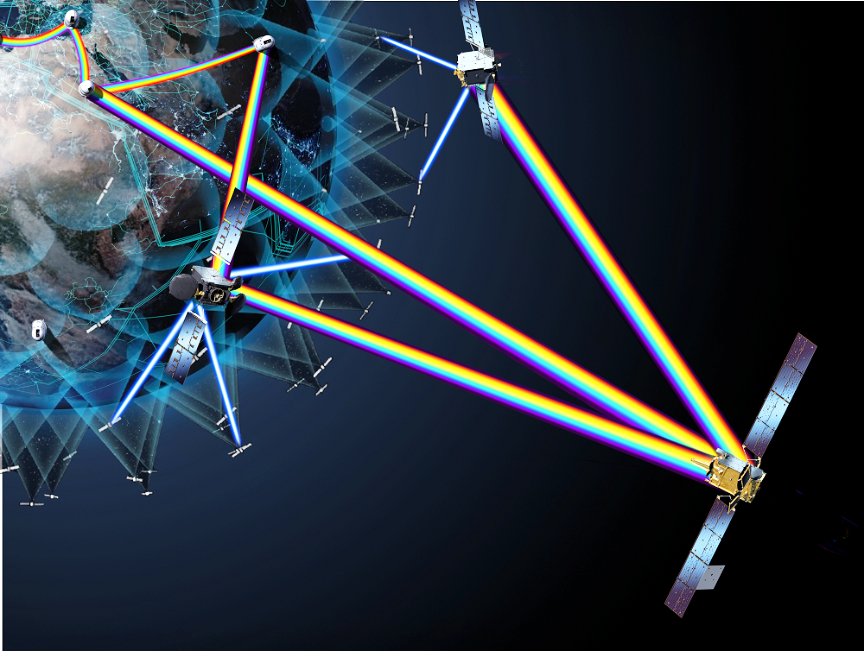
Thales Alenia Space, the joint venture between Thales (67%) and Leonardo (33%), has signed a contract with the Italian Space Agency (ASI) to conduct a feasibility study for the PRISMA Second Generation (PSG) hyperspectral Earth observation system.

This will be leading a consortium that includes Leonardo, Telespazio (the joint venture between Leonardo (67%) and Thales (33%)), e-GEOS and SITAEL. Lasting nine months, the feasibility study will take an innovative approach to support the development of applications in both national and international markets, such as improved monitoring of natural and atmospheric resources, while providing the data needed to more effectively manage regional development and environmental risks.

The feasibility study will capitalize on increased interest in hyperspectral imaging by consolidating the technological excellence achieved through the PRISMA demonstration mission. It will deliver higher performance in line with the updated application requirements specified by the European Space Agency (ESA) for the upcoming Copernicus Hyperspectral Imaging Mission for the Environment (CHIME), deployed as part of Europe’s vast Copernicus environmental monitoring program.

The main challenge for hyperspectral technology is to capture images with high quality and spatial resolution, with frequent re-visit times and high signal to noise ratio. PRISMA SG will represent a significant step forward over the first-generation PRISMA system, improving spatial resolution via enhanced platform and instrument agility.
Thales Alenia Space in Italy will build the new satellite and take complete responsibility for system design, drawing on its proven experience in Earth Observation (EO) satellites for Copernicus and the first and second-generation COSMO SkyMed satellites. It was also selected by ESA in 2020 to design and build the two CHIME environmental monitoring satellites, with Leonardo contributing to the payload. Leonardo provided the PRISMA hyperspectral instrument, already in orbit, and will also build this payload for PRISMA SG, but offering even higher performance to address the rapidly growing number of government, scientific and industrial applications.

Telespazio will be responsible for designing the PRISMA SG ground segment, while e-GEOS, a joint Telespazio (80%) and ASI (20%) company, will be in charge of market analysis and will also help Leonardo define user requirements.
SITAEL, a space company and a part of Angel Group, capitalizing on the national investments on electric propulsion, will participate in the trade-offs of satellite and platform as well as study the configurations to make PRISMA SG an “all-electric” satellite, thereby ensuring the maneuverability and operational flexibility that only this type of satellites provide. Moreover, thanks to its extensive experience in control electronics, as in the case of the ESA Copernicus CHIME mission, SITAEL will study the sophisticated control unit of the hyperspectral payload, aiming at the scalability of a cutting-edge and consolidated technology that is able to speed up the development time as well as the implementation costs.
Drawing on more than 40 years of experience and a unique combination of skills, expertise and cultures, Thales Alenia Space delivers cost-effective solutions for telecommunications, navigation, Earth observation, environmental management, exploration, science and orbital infrastructures. Governments and private industry alike count on Thales Alenia Space to design satellite-based systems that provide anytime, anywhere connections and positioning, monitor our planet, enhance management of its resources, and explore the Solar System and beyond. Thales Alenia Space sees space as a new horizon, helping to build a better, more sustainable life on Earth. A joint venture between Thales (67%) and Leonardo (33%), Thales Alenia Space also teams up with Telespazio to form the parent companies’ Space Alliance, which offers a complete range of services. Thales Alenia Space posted consolidated revenues of approximately 1.85 billion euros in 2020 and has around 7,700 employees in 10 countries with 17 sites in Europe and a plant in the US.
Additionally, Thales Alenia Space recently kicked-off two projects related to HydRON, being funded by the European Space Agency (ESA). The two contracts will allow Thales Alenia Space, and its partners, to develop its own vision demonstrating the potential of laser-based satellite communication.

The past years have seen a quick expansion of communications infrastructures fueled by the unprecedented rise in the volume of data streams that circle the globe. This demand is also felt in the aerospace sector, where interconnection and integrative network concepts across orbits and across the globe are key to fulfil the demands of the future. Laser-based satellite communication has the potential to bring terrestrial network functionalities to satellite networks in order to help bridge this digital gap for a variety of applications (e.g. virtual private networks, edge computing, 5G/6G services, internet to/from space and airborne assets). This is beyond current satellite capabilities, and ESA’s HydRON (High Throughput Optical Network) vision seeks to develop these for European and Canadian industries.
The vision is part of ESA’s ARTES Advanced Research in Telecommunications Systems (ARTES) 4.0 Strategic Program Line on “Optical & Quantum Communications” – ScyLight program. It is an Optical Transport Network concept combining extremely high throughput Optical Ground-Space Links, high throughput Optical Inter-Satellite Links and on-orbit routing/switching capabilities.

The resulting space Optical Transport Network aims at seamless inter-operability with existing high-capacity terrestrial networks – the “internet beyond the cloud(s).” In the frame of the two contracts, Thales Alenia Space led a consortium, including GMV, Telespazio, CGI, CRAT, Officina Stellare, DLR-IKN, Kepler Communications, Scuola Superiore Sant’Anna and Open Fiber. This consortium will study the implementation of a HydRON Demonstration System (Phase A/B1) as well as develop a System Simulator Testbed The Telecommunications and Integrated Applications Directorate (TIA) of ESA is funding both.
The objective of the first contract (HydRON Demonstration System Phase A/B1) is to push the development and validation of the HydRON technology integrated into terrestrial networks at terabit-per-second capacity. It will demonstrate:
- the end-to-end system, including critical key technologies and a minimum viable service
- networking capabilities, including seamless inter-operability with high-capacity terrestrial networks
- operational concept, reflecting an expandable HydRON concept
The Phase A/B1 study will last 18 months to propose an implementation concept to demonstrate the HydRON vision, tentatively composed of two space-based laser communication payloads in LEO and GEO, interconnecting with each other, several optical ground stations and terrestrial fibre optics networks. Their completion will pave the way for a subsequent implementation phase (Phase B2/C/D/E1, launch in 2026), subject to ESA member states decision at ESA’s next Council Meeting at ministerial level in November 2022. The objective of the second contract is to develop a HydRON System Simulator Testbed to:
- consolidate HydRON vision, system functionalities & end-to-end system architecture
- support HydRON Demonstration System trade-offs and baseline selection
- verify optical communications network solutions and technologies in a representative end-to-end network involving interfaces with high-capacity terrestrial networks evaluate performance of optical satellite networks in scenarios with many degrees of freedom and under a large number of stochastic environment variables
